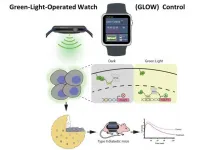Rates of Kawasaki disease - a condition that creates inflammation in blood vessels in the heart and is more common in children of Asian/Pacific Island descent - have substantially decreased in South Korea during the COVID-19 pandemic. The decrease could be due to mask-wearing, hand-washing, school closures and physical distancing, suggesting Kawasaki disease may be prompted by infectious agents. The cause of Kawasaki disease is unknown, though it may be an immune response to acute infectious illness.
DALLAS, June 7, 2021 -- The rate of Kawasaki disease in South Korea has substantially decreased during the COVID-19 pandemic, possibly due to pandemic prevention efforts, such as mask-wearing, hand-washing and physical distancing, according to new research published today in the American Heart Association's flagship journal Circulation.
Kawasaki disease is the most common cause of heart disease that develops after birth in children, creating inflammation in blood vessels, particularly heart arteries. Kawasaki disease usually occurs before age 5 and is more common among children of Asian descent, although it affects children of all races and ethnicities. South Korea has the second-highest incidence of Kawasaki disease in the world, after Japan.
According to the 2021 American Heart Association's heart disease and stroke statistics, the incidence of Kawasaki disease in 2006 was 20.8 per 100,000 U.S. children under age 5, the most recent national estimate available and is limited by reliance on weighted hospitalization data from 38 states. Although Kawasaki disease can occur into adolescence (and rarely beyond), 76.8% of U.S. children with the condition are age 5 or younger. Boys have a 1.5-fold higher incidence of Kawasaki disease than girls. The rate of Kawasaki disease appears to be rising worldwide, possibly due to improved awareness and recognition of the disease, more frequent diagnosis of incomplete Kawasaki disease and true increasing incidence.
Symptoms of Kawasaki disease include fever, rash, red lips and strawberry tongue (bumpy and red with enlarged taste buds). Prompt treatment is critical to prevent significant heart problems, and most children recover fully with treatment. Although the cause of Kawasaki disease is unknown, it may be an immune response to an acute infectious illness based in part on genetic susceptibilities.
South Korean researchers noted that efforts to prevent COVID-19 provided a unique opportunity to analyze the possible effects of mask-wearing and social distancing on Kawasaki disease. Since February 2020, South Korea has required strict mask-wearing, periodic school closures, physical distancing, and frequent testing and isolation for people with COVID-19 symptoms.
Researchers reviewed health records from January 2010 to September 2020 in a South Korean national health insurance database to identify Kawasaki disease cases among children from birth to 19 years old. They identified 53,424 cases of Kawasaki disease during the 10 years studied, and 83% of cases occurred in children younger than 5 years of age.
Researchers compared the rate of Kawasaki disease from February 2020 to September 2020, a time of significant COVID-19 prevention efforts, to pre-COVID-19 rates of Kawasaki disease. Their analysis found the number of Kawasaki disease cases dropped substantially -- by about 40% -- after COVID-19 prevention efforts were implemented in Feb. 2020. Before 2020, the average number of cases of Kawasaki disease between February and September was 31.5 per 100,000 people, compared to 18.8 per 100,000 people for the same months in 2020 during the COVID-19 pandemic. The greatest decrease in cases occurred among children up to age 9, while no decrease occurred among 10- to 19-year-olds.
"Our findings emphasize the possible impact of environmental triggers on the occurrence of Kawasaki disease," said study lead author Jong Gyun Ahn, M.D., Ph.D., associate professor of pediatrics at Severance Children's Hospital at Yonsei University College of Medicine in Seoul, South Korea. "The decrease in the incidence of Kawasaki disease after the implementation of non-pharmaceutical interventions is very clear, and it is unlikely that other independent interventions were accidentally involved.
"The broad and intensive COVID-19 prevention interventions had the additional effect of lowering the incidence of respiratory infections, which have previously been suggested as triggering agents for Kawasaki disease," Ahn noted. "Additionally, the seasonality of the Kawasaki disease epidemic disappeared in South Korea. It is usually most prevalent in the winter, with a second peak in late spring-summer."
American Heart Association volunteer expert Jane W. Newburger, M.D., M.P.H., FAHA, notes the research findings are consistent with the hypothesis that Kawasaki disease is an immunologic reaction elicited in genetically susceptible people when exposed to viruses or other infectious agents in the environment. Newburger is a member of the American Heart Association's Young Hearts Council, associate cardiologist-in-chief, academic affairs; medical director of the neurodevelopmental program; and director of the Kawasaki Program at Boston Children's Hospital; and Commonwealth Professor of Pediatrics at Harvard Medical School.
"During the COVID pandemic, children were exposed to fewer viruses and other infectious agents. So the 'natural experiment' that occurred from isolation and masking of children
supports the likelihood that Kawasaki disease is triggered by viruses or other infectious agents in the environment," Newburger said. "However, these dramatic changes in lifestyle would be difficult to sustain if the sole purpose was to prevent Kawasaki disease. Kawasaki disease is a very rare illness in children and does not represent a public health emergency like COVID."
Newburger also noted that many Kawasaki disease experts in the U.S. also have noticed fewer cases in their centers during the pandemic.
This study has some limitations: cases of Kawasaki disease among patients who did not submit insurance claims are not included in the national insurance database; and the study was observational and could not control for other factors such as whether or not patients sought and received health care including screening and treatment for Kawasaki disease.
It is also important to note that Kawasaki disease is not the same as multi-system inflammatory syndrome in children (MIS-C), the new condition identified this past year during the COVID-19 pandemic. While the two conditions have some overlapping symptoms, they also have some distinct differences including more profound inflammation and more gastrointestinal symptoms with MIS-C, and MIS-C is associated with COVID-19 infection.
INFORMATION:
Co-authors are Ji-Man Kang, M.D.; Young-Eun Kim, Ph.D.; Kyungmin Huh, M.D.; Jinwook Hong, M.S.F.; Dong Wook Kim, Ph.D.; Min Young Kim, R.N.; Se Yong Jung, M.D.; Jong-Hun Kim, M.D.; and Jaehun Jung, M.D. Author disclosures are listed in the manuscript.
The Basic Science Research Program, the National Research Foundation of Korea and the Ministry of Education funded the study.
Additional Resources:
Available multimedia is on right column of release link - https://newsroom.heart.org/news/pandemic-prevention-measures-linked-to-lower-rates-of-kawasaki-disease-in-children?preview=b81f253d38aaf19cce73eb1cad160315
After June 7, view the manuscript online.
What is Kawasaki Disease? (PDF)
Kawasaki Disease: Signs, Symptoms and Diagnosis
Diagnosis, Treatment, and Long-Term Management of Kawasaki Disease: A Scientific Statement for Health Professionals From the American Heart Association
Follow AHA/ASA news on Twitter @HeartNews
Follow news from the AHA's flagship journal Circulation @CircAHA
Statements and conclusions of studies published in the American Heart Association's scientific journals are solely those of the study authors and do not necessarily reflect the Association's policy or position. The Association makes no representation or guarantee as to their accuracy or reliability. The Association receives funding primarily from individuals; foundations and corporations (including pharmaceutical, device manufacturers and other companies) also make donations and fund specific Association programs and events. The Association has strict policies to prevent these relationships from influencing the science content. Revenues from pharmaceutical and biotech companies, device manufacturers and health insurance providers are available here, and the Association's overall financial information is available here.
About the American Heart Association
The American Heart Association is a relentless force for a world of longer, healthier lives. We are dedicated to ensuring equitable health in all communities. Through collaboration with numerous organizations, and powered by millions of volunteers, we fund innovative research, advocate for the public's health and share lifesaving resources. The Dallas-based organization has been a leading source of health information for nearly a century. Connect with us on heart.org, Facebook, Twitter or by calling 1-800-AHA-USA1.



